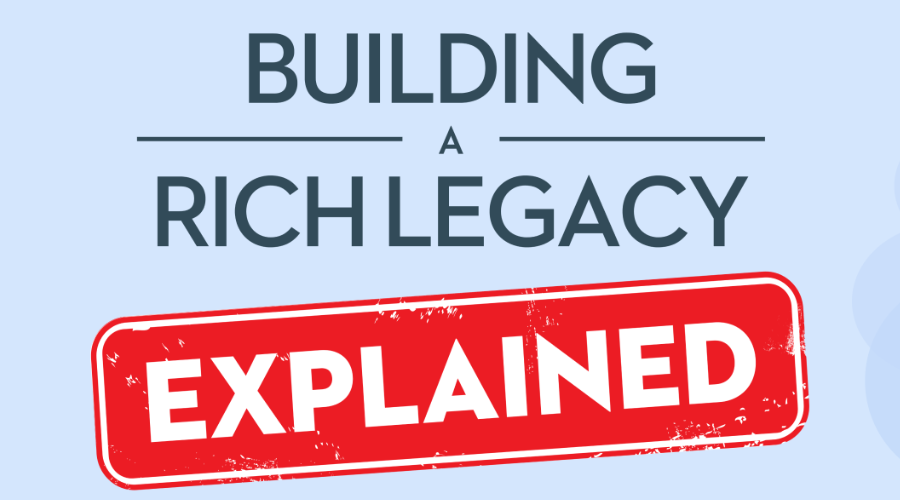Learn what’s next for Canadians in terms of emergency benefits
When extended closures and business disruptions due to the COVID-19 pandemic led to mass layoffs in Canada, the federal government rolled out the Canadian Emergency Response Benefit (CERB) program to help Canadians tide over immediate financial difficulties. While this benefit was initially set to expire in July 2020 for some of the earliest applicants, the government extended it by an additional eight weeks. Almost six months into the pandemic, the novel coronavirus continues to disrupt lives and livelihoods, but the CERB payments are set to stop by September 2020. In the meantime, businesses continue to struggle, the possibilities of short-term economic revival are bleak, and certain sectors will lag behind for the foreseeable future, leaving the job market heavily unbalanced.
Read on to learn what happens after CERB payments end and understand alternative solutions to support your finances. If you are heading into your golden years, you will benefit from knowing more about all available options for boosting your retirement finances during the coronavirus crisis.
All you need to know about CERB
Before we understand what happens when CERB payments stop, here are the highlights of the Canada Emergency Response Benefit Program.
- Who is eligible for CERB? Anyone residing in Canada, 15 years or older, who lost their income due to COVID-19. Broadly, this includes individuals who:
- Originally qualified for EI or sickness benefits, or have exhausted their EI regular or fishing benefits between December 29, 2019 and October 3, 2020
- Did not meet EI eligibility, such as wage earners, contract workers, and self-employed
- Had employment and/or self-employment income of at least $5,000 in 2019 or in the 12 months prior to the date of their application
In addition to people who have not quit their job voluntarily, CERB benefits are also applicable to individuals who are away from work because they are sick due to COVID-19, in quarantine/ self-isolation, or taking care of others who are sick or in quarantine due to COVID-19.
- How does the payment work? Each eligibility period is a block of 4 weeks, starting March 15, 2020. The last 4-week cycle is set to end on October 3, 2020. CERB payments are made at the end of every four-week period. The last date to apply for retroactive payments within that period is December 2, 2020.
- What is the payout? CERB is a taxable benefit that provides $2,000 a month, i.e. $500 a week for 28 weeks. Once an applicant signs up for the emergency benefits and submits the claim, they receive payments within 3 to 10 business days. Eligible Canadians can re-apply for CERB for multiple 4-week periods up to a maximum of 28 weeks.
- What are the criteria for application? While submitting the first claim, the applicant should not have earned more than $1,000 in employment or self-employment income for at least 14 days in a row for the initial 4-week period in which you apply. For subsequent claims to each block of 4 weeks, the applicant should not have earned more than $1,000 in employment or self-employment income for the entire 4-week benefit period of each claim.
Impact on Canadian beneficiaries at the end of CERB
So what happens next? What are the options for Canadians who are unemployed? Around 8.5 million Canadians lost their jobs due to the COVID-19 pandemic and have benefited from CERB payments over the last several weeks. The uptake for this program was beyond all estimations, and the government has already incurred unexpectedly huge deficits, making the CERB program in its current avatar, unsustainable. However, the labour market will take a long time to bounce back or reach a stage of ‘normalcy’. Here are two things that may happen:
- Some CERB recipients will move to the regular Employment Insurance (EI) Program. Click here to check EI benefits eligibility. Note that EI payments compare less favorably than CERB benefits. For example, a full-time retail worker earning $500 a week before the pandemic continued to make the entire $500 through CERB. EI pays 55% of the average insurable weekly earnings, up to a maximum of $573 a week. Which means, if this individual remains unemployed and switches to EI, their benefit would drop to approximately $275 per week.
- The remaining people who do not qualify for EI, such as contract or gig workers have been covered by the federal government’s ‘parallel benefits’ (covered in detail in the next section). While these relief measures may not be as attractive as CERB, they provide income support for those who remain unemployed.

Government support for Canadians post-CERB
As CERB begins to wind down, the government plans to roll out three new taxable recovery benefits for up to one year, effective September 27, 2020. These benefits aim to support Canadians who continue to face financial hardships in light of COVID-19 and the related economic situation.
- Canada Recovery Benefit: Will provide $400 per week for up to 26 weeks to self-employed individuals and gig economy workers who do not qualify for EI. Workers can apply after every 2 week period for which they seek income support.
- Canada Recovery Sickness Benefit: Will provide $500 per week for up to 2 weeks to workers who may not be able to work because they are sick or need to self-isolate due to COVID-19. Workers can apply after the one-week period in which they seek income support.
- Canada Recovery Caregiving Benefit: Will provide $500 per week per household, for up to 26 weeks. This benefits aims to support Canadians who have been unable to work for at least 60% of the normally scheduled hours within any given week because they need to provide care to children or other dependents who stay at home. Essentially, the government is trying to ensure that parents and others with dependents do not need to choose between caring for them and paying the bills. Workers can apply after the period in which they are seeking income support.
Policymakers continue to work round-the-clock to devise transitional measures that encourage people to find alternative work, provide income support, and provide easy access to services that will help people find such jobs. The end of CERB payments will undoubtedly impact every Canadian beneficiary. However, a lot may also depend on the skill sets, age, experience, and other such factors. Some people may switch fields and take up jobs in sectors that are booming, some others may pull through with EI or the new recovery benefits, while a few may even be forced into accepting an early retirement.
Options for funding your retirement in the event of job loss
The COVID-19 pandemic has played havoc with even the most well-structured and carefully-designed retirement finance plans. Rapid shutdowns, volatile stock markets, slow economic recoveries and bleeding financial portfolios have wiped out a significant portion of the retirement income that many Canadians were banking on. Those who were on the verge of retirement and counting on income from investments to cover their living costs are seriously considering delaying their retirement. Those who were forced into an early retirement due to COVID-19 may be covered under CERB and Canada Recovery Benefit, but these benefits are applicable for a limited duration and are hugely insufficient to fund most retirement plans.
Whether you were already retired before the pandemic, have been pushed into a premature retirement, or need to postpone your retirement plans due to financial constraints, your retirement fund options may need some critical alterations:
- Assess how much you need for your current expenses and potential liabilities. Check the state of your current financial portfolio to know how much of the retirement income is locked in. Will you be able to manage your needs for the immediate future with the current income stream?
- Get a portfolio checkup on your investments and decide whether to cash in early with acceptable losses, or stay the course for a mid-to-long-term recovery. A portfolio that was heavily tilted towards equity may be looking disastrous for now, but rebalancing your financial portfolio will help you cut any further losses and preserve cash for retirement.
- Consider a combination of downsizing, selling and renting, or borrowing through a secured Home Equity Line of Credit (HELOC). Besides enjoying a fairly low interest rate, you can access up to 80% of the value of your home (excluding the outstanding mortgage amount).
- If you are 55 and over and own your home, you may be eligible for a reverse mortgage, which can be one of the best options for funding your retirement. Unlike a HELOC, your monthly cash flow is not impacted as reverse mortgage repayments are not due until you decide to sell or move. You can skip the proof of income processes, and simply cash in on up to 55% of your home equity value, making reverse mortgage a better option than HELOC in the absence of a steady income stream.
Fund your retirement with the CHIP Reverse Mortgage®
One of the best retirement finance options for Canadians 55+, the CHIP Reverse Mortgage from HomeEquity Bank will put tax-free disposable cash in your hands. You will not have to stress over monthly interest or principal repayments. You can use the money as an income supplement for everyday expenses, or to ease the burden on out-of-pocket healthcare expenses. You may also find it useful for the purpose of debt consolidation. Similar to CERB and other government-provided emergency benefits, a reverse mortgage does not impact your Old Age Security (OAS), Guaranteed Income Supplement (GIS), or income from Registered Retirement Savings Plan (RRSPs). Moreover, you retain the ownership and title and continue to stay in the comfort of your home. You can also decide whether you want the mortgage amount in lump sum or in deposits over time.
While the government-provided emergency benefits come with an end date, the CHIP Reverse Mortgage could be the best option to fund your retirement on a sustainable basis. Call 1-866-758-2447 to learn more. You can also use our reverse mortgage calculator to find out how much tax-free cash you can access from the equity value of your home.






























